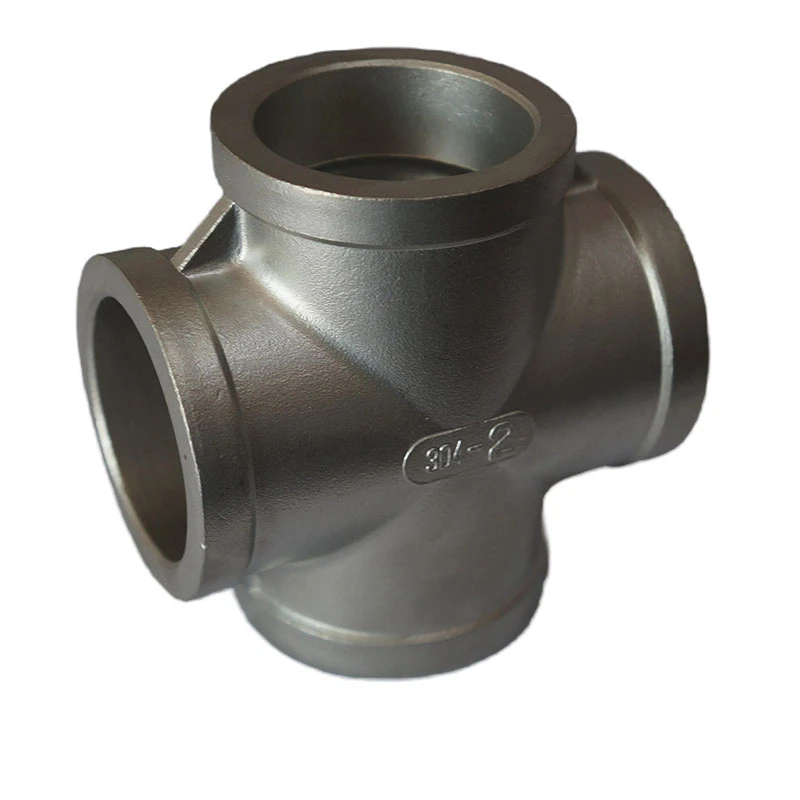Understanding Sand Casting Techniques for Grey Cast Iron Production and Applications
Understanding Sand Casting of Grey Cast Iron
Sand casting is one of the most versatile and widely used metal casting processes, particularly known for its capability to produce complex shapes with minimal investment in equipment. Among the various alloys that can be cast using this method, grey cast iron is a prominent material due to its excellent machinability, fluidity, and wear resistance. This article delves into the intricacies of sand casting grey cast iron, highlighting its advantages, process, and applications.
What is Grey Cast Iron?
Grey cast iron, characterized by its graphitic microstructure, is named for the grey color of the fracture surface of the material. This iron alloy contains significant amounts of carbon (typically 2.5% to 4%) and silicon (1% to 3%), along with small quantities of other elements like manganese, sulfur, and phosphorus. The presence of graphite flakes within the iron matrix imparts several beneficial properties, such as good damping characteristics, thermal conductivity, and superior machinability compared to other cast iron varieties. These features make grey cast iron a popular choice for various industrial applications, including engine blocks, pipes, and machine bases.
The Sand Casting Process
The sand casting process involves several key steps
1. Pattern Creation The first stage entails crafting a pattern, which is a replica of the final product. Patterns can be made from various materials, including wood, metal, or plastic. The design must account for shrinkage during cooling, allowing for dimensional accuracy in the final casting.
2. Mold Preparation The next step involves preparing the mold. A mixture of sand, clay, and water is used to create a mold that can withstand the heat and pressure of molten iron. The sand is packed around the pattern to form a mold cavity, and then the pattern is removed, leaving a hollow space that will contain the molten iron.
3. Melting the Iron Grey cast iron is melted in a furnace, reaching temperatures typically around 1400-1500°C. The molten metal is then poured into the mold cavity. The properties of the melted grey cast iron, such as temperature and composition, are crucial at this stage to ensure a successful casting with the desired characteristics.
4. Solidification and Cooling Once the molten iron is poured, it begins to cool and solidify. The rate of cooling can affect the final properties of the cast iron, influencing its hardness, tensile strength, and microstructure. Controlled cooling practices may be implemented to achieve the desired traits in the final product.
5. Mold Removal and Finishing After the iron has cooled completely, the sand mold is broken away to reveal the cast piece. The final step involves cleaning and finishing the casting to meet specific dimensional and surface quality requirements, including processes like machining, grinding, or coating.
Advantages of Sand Casting Grey Cast Iron
sand casting grey cast iron

There are several advantages to using sand casting for grey cast iron
- Cost-Effectiveness Sand casting is relatively inexpensive compared to other casting methods, particularly for low to moderate production volumes. The materials and equipment required are generally less costly.
- Versatility This method can accommodate a wide range of part sizes and shapes, making it suitable for both small and large components. The adaptability of sand molds allows for complex geometries.
- Strong Mechanical Properties Grey cast iron castings exhibit excellent mechanical performance, making it ideal for components subjected to wear and stress
.- Recyclability Used sand molds can often be reclaimed and reused, promoting an environmentally friendly approach to the manufacturing process.
Applications of Grey Cast Iron Casting
The versatility and durability of grey cast iron make it a popular choice across various industries. Common applications include
- Automotive Components Engine blocks, cylinder heads, and transmission cases are frequently made from grey cast iron due to its ability to withstand high temperatures and stresses.
- Machinery Bases The dimensional stability and vibration-damping characteristics of grey cast iron make it suitable for the bases of heavy machinery and equipment.
- Pipes and Fittings Grey cast iron's corrosion resistance and longevity make it an ideal material for pipes used in sewage and drainage systems.
- Railway Industry Components such as bogies, wheel hubs, and couplings benefit from the toughness and reliability of grey cast iron.
In conclusion, sand casting grey cast iron remains a fundamental technique in modern manufacturing. Its robustness and wide-ranging applications underscore its importance in producing high-quality metallic components. As industries continue to evolve, innovative techniques and processes within sand casting will undoubtedly enhance the capabilities of grey cast iron even further.
-
OEM Sand Cast Pump Valve Fittings - Baoding Hairun | Precision Engineering, CustomizableNewsJul.30,2025
-
OEM Sand Cast Pump Valve Fittings - Baoding Hairun Machinery And Equipment Trading Co., Ltd.NewsJul.30,2025
-
OEM Sand Cast Pump Valve Fittings - Baoding Hairun Machinery And Equipment Trading Co., Ltd.NewsJul.30,2025
-
OEM Sand Cast Pump Valve Fittings - Baoding Hairun Machinery|Precision Engineering&Fluid ControlNewsJul.30,2025
-
OEM Sand Cast Pump Valve Fittings - Baoding Hairun Machinery And Equipment Trading Co., Ltd.NewsJul.30,2025
-
OEM Sand Cast Pump Valve Fittings-Baoding Hairun Machinery And Equipment Trading Co., Ltd.NewsJul.30,2025















